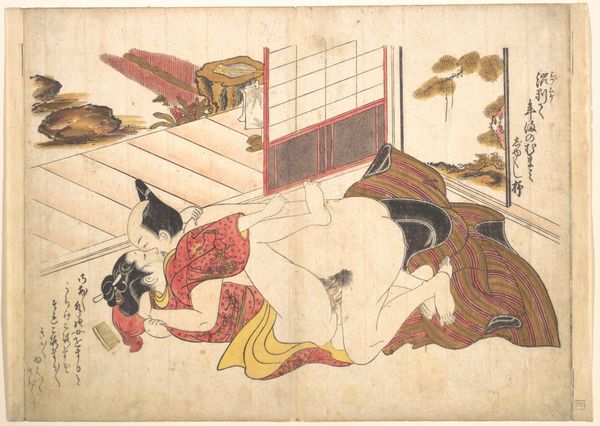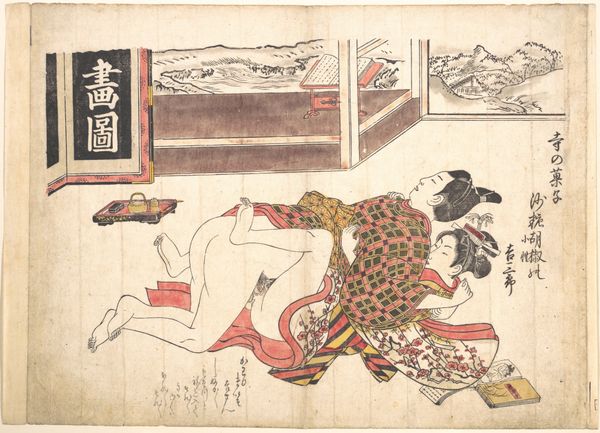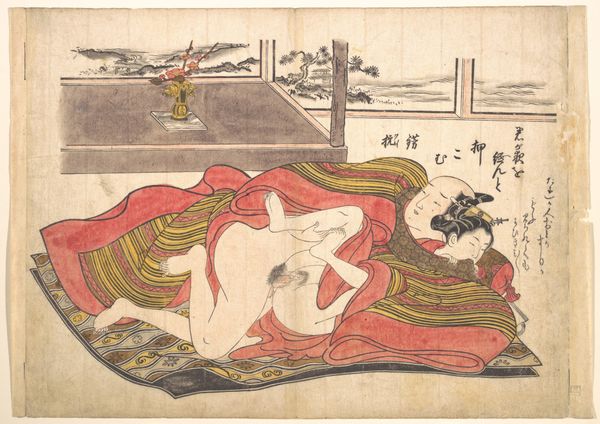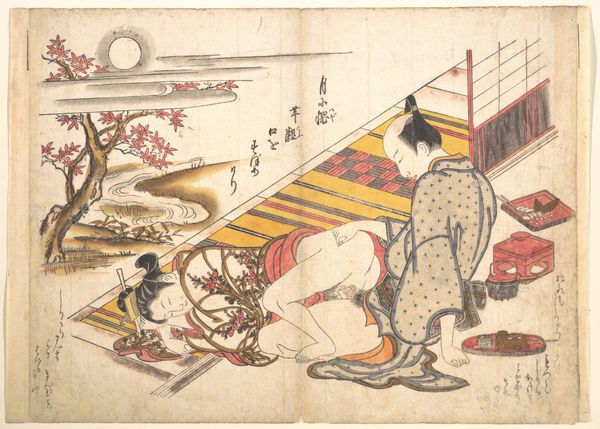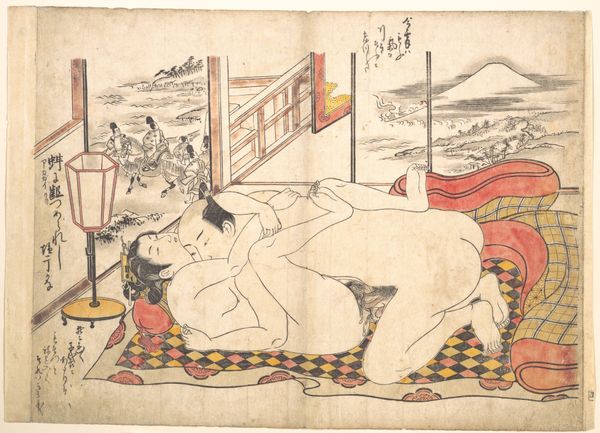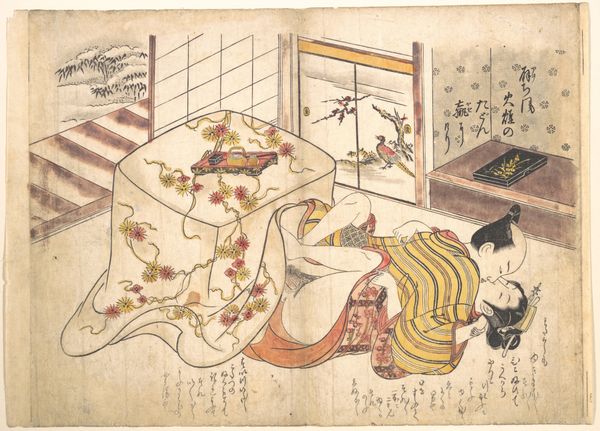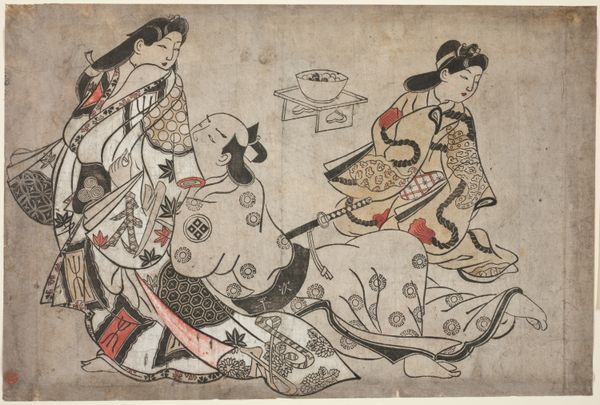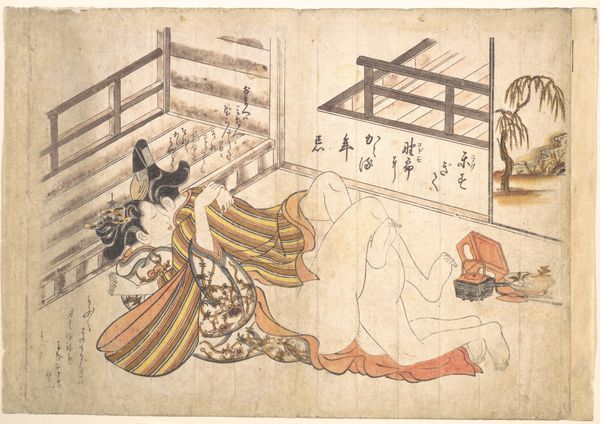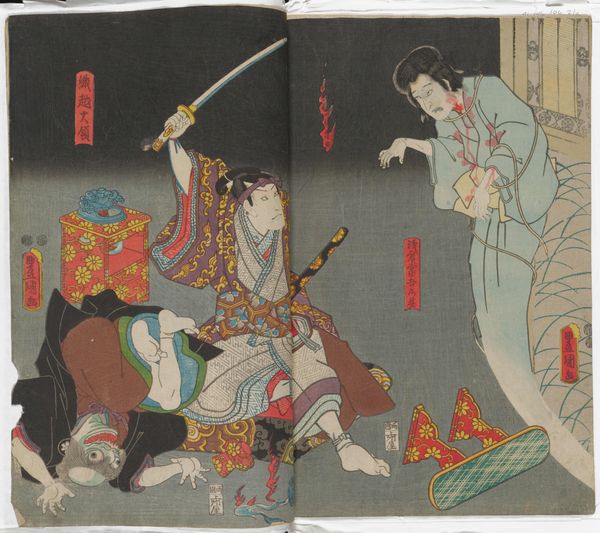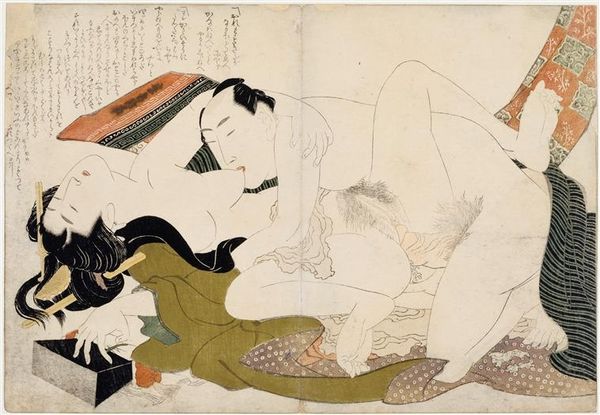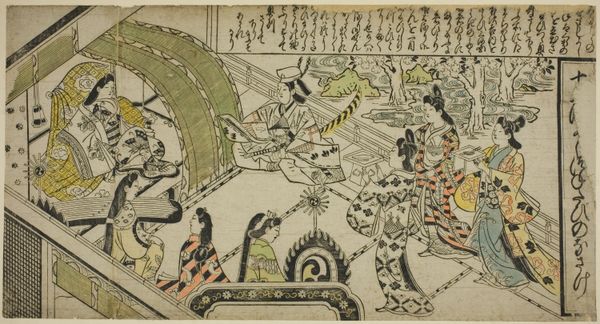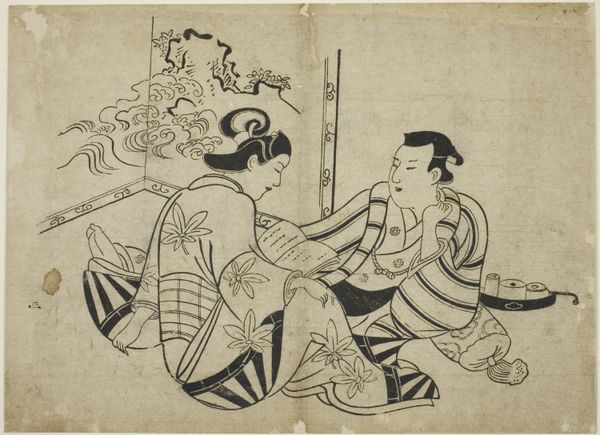
# print
#
asian-art
#
ukiyo-e
#
genre-painting
#
nude
#
erotic-art
Dimensions: 10 3/4 x 15 1/8 in. (27.3 x 38.4 cm)
Copyright: Public Domain
Editor: Here we have "Bedroom Scene," a print by Okumura Masanobu, made sometime between 1729 and 1749. It's currently housed in the Metropolitan Museum of Art. My immediate thought is that the composition feels surprisingly flat and decorative, despite the explicit subject matter. What do you see when you look at this piece? Curator: Precisely. The layering of forms and the considered use of line are quite remarkable. Note how Masanobu employs strong outlines, almost like cloisonné, to define the figures and objects, further flattening the space. Are you struck by the patterning? Editor: Yes, now that you mention it! The textile designs—the kimono, the rug—they all contribute to this surface-oriented effect. But the figures themselves seem less defined, almost secondary to the patterns around them. Curator: Indeed. The interplay between figure and ground becomes crucial. The artist subverts traditional Western perspective; depth is suggested not through linear perspective, but through the placement and overlapping of forms. Notice the objects carefully arranged in the background—what relationship do they establish? Editor: Hmm, they seem like almost still life elements, offering a glimpse into the domestic space, but again rendered quite flatly, almost like a collage. It’s creating this sense of a designed space more than a real one. Curator: You have it. And what effect does this tension—between eroticism and formalism, depth and flatness—create, do you think? Editor: I think it adds a layer of complexity. It prevents the image from being purely voyeuristic. It elevates the scene through the artist’s manipulation of the materials, line, and design. Curator: Well observed. The image uses inherent properties of ukiyo-e printing. Editor: I hadn't thought about that subversion of expectations that much before, how the flattening changes our viewing experience. It definitely made me consider how form dictates function in this image, as much as any historical context.
Comments
No comments
Be the first to comment and join the conversation on the ultimate creative platform.
